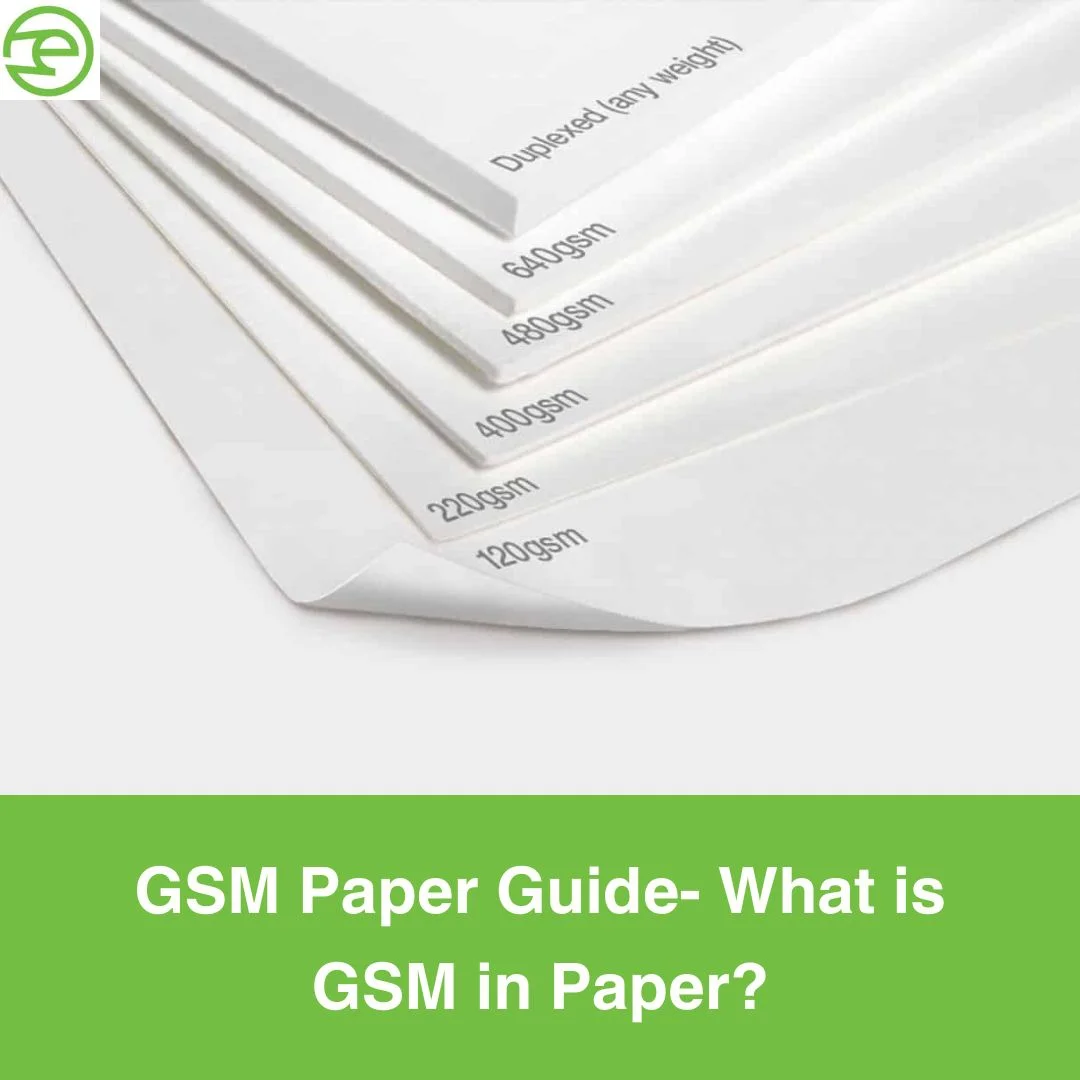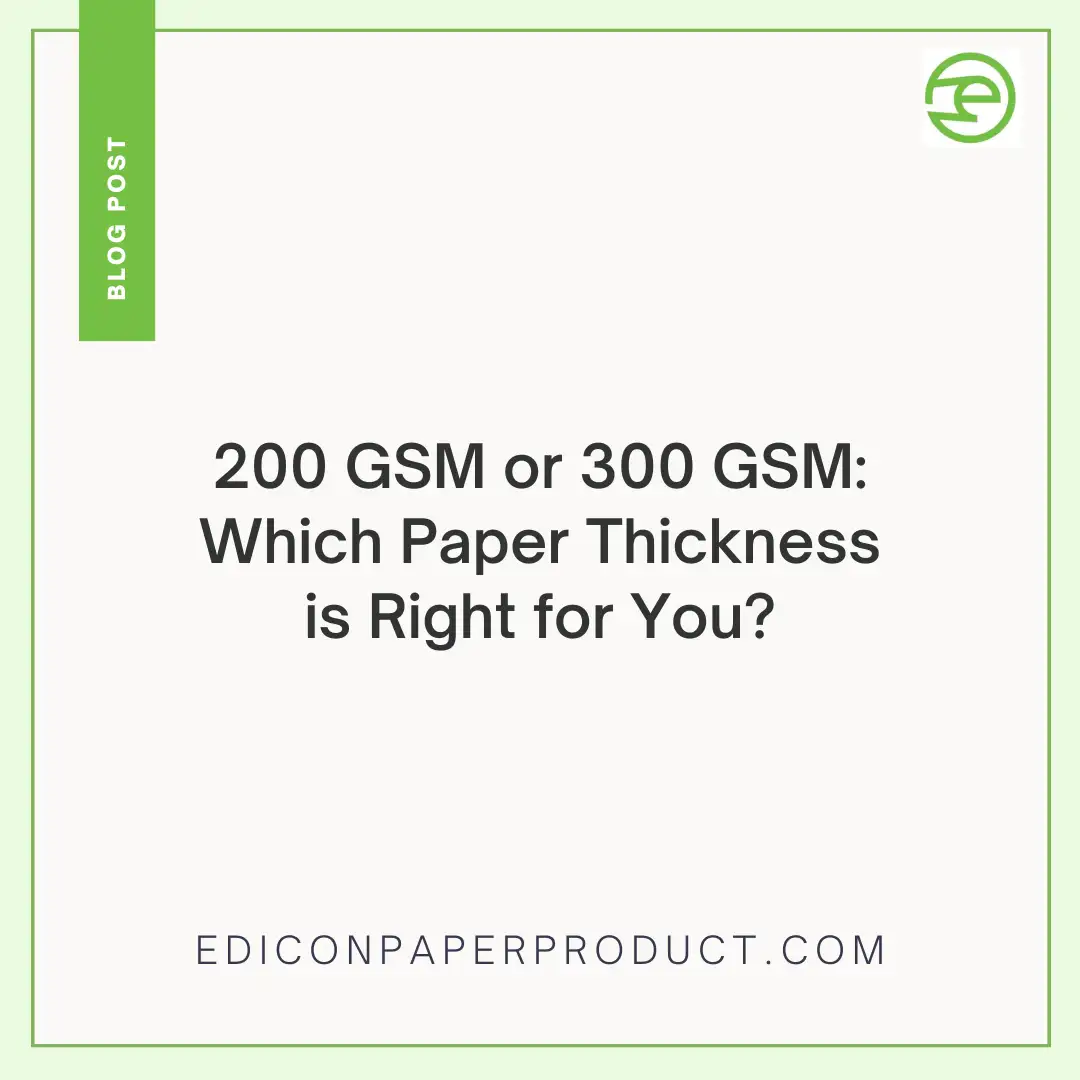GSM Paper Guide: What is GSM in Paper?
GSM Paper Guide
Welcome to the world of papers that seem to be a mystery. There was, perhaps, an unsung hero behind the touch of your favorite book or the weight of that Amazon box on doorsteps. Rise and meet GSM, the mute ruler of papers worth. Curious minds shall now be taken through an intriguing journey to unravel this mystery, as guided below.
What is GSM, anyway?
Brace yourself for a crisp definition: GSM stands for Grammage across Square Meter.
But hold on – why does it matter? Well, the mass of papers or boards you're holding isn’t merely a number; it's the secret sauce shaping viscosity, surface, and more.
So, buckle up as we unravel the mysteries of GSM and navigate through the textured landscape of its intricacies.
Unraveling GSM
While exploring the GSM dimension of the product on a deeper level, you have to face more sophisticated processes that emphasize its value. The detailed weighing process, the basis of every fiber of the GSM, includes a careful assessment of the weight along all dimensions. The heavy measure becomes a guiding light for consumers who can discriminate between the best standards. Within the GSM gamut, the options themselves are potent from the celestial delicacy of lightweight specimens to the sturdy and substantial essence of their heavyweight brethren.
Navigating through the landscape, we discover the symbiotic bond between GSM and paper density. It's not merely a quantitative measure but an architect of touch, shaping the tactile understanding of paper aficionados. As the scales tip, each GSM range manifests its unique character, crafting a narrative of printability and packaging prowess.
Significance of GSM in Paper
The exploration of GSM transcends its mere numeric worth, delving into practical applications that shape industries.
A. Print Media
Unravel the symbiotic association between GSM and print, elucidating how the weight directly influences the sharpness and vibrancy of ink on paper.
With the feather touch for flyers (around 80 GSM) or the sturdy canvas of magazines (120-160), understanding the sweet spot for numerous print types is key.
B. Packaging
Decipher the fundamental structure of packing strength by analyzing the function of GSM. Lighter GSM for labels, heavier GSM for corrugated boxes – a light and delicate balance between weight and toughness.
Enter a realm where GSM dictates endurance – corrugated boards boasting 200 GSM and beyond, ensuring your packaging withstands the journey.
In an intricate dance amid numbers and their uses, GSM emerges as a silent choreographer, shaping the visual and tactile practices across printing and packaging landscapes.
Selecting the Precise GSM
This manner is not suitable for the industry, especially in the case of these several applications. This is the use of its purpose. Are you producing a good brochure or are you packing items that break with strong packaging?
These factors lead both the search for the perfect GSM as well as in cooperation with end-user needs.
1. Intended Usage Is Important:
Printing - Choose a number that works well with the intended printing excellence.
Packaging - Pick a weightage that complies with durability specifications.
2. Demands Made by Final Users:
Texture - Some people may find that a low number assures smooth handling.
Strength - For vigorous and enduring applications, a high GSM number may be necessary.
Traversing this landscape is made easier by real-world cases. Although cautionary tales draw attention to the detrimental consequences of bad selection, case studies in the actual world show how prudent GSM judgments lead to success. Besides concentrating just on the numbers, decisions should be made that both meet the intended goal and surpass the end user's expectations.
Future Outlook
Research reveals, an interesting spotlight with the new opening offered by the development of innovation.
Advancing Technologies: GSM norms are about to be redefined by the combination of nanotechnology and paper manufacturing. It is envisaged that a range of ultra-thin sheets with diverse GSM standards—from a microscopic 10 to a considerable 500 will satisfy a variety of manufacturing demands.
Integration of Smart Products: Smart sheets with integrated sensors and conductive things are about to appear as sectors embrace sustainability. GSM measures will go beyond conventional metrics, impacting these innovative paper products' conductivity and usefulness.
Higher-GSM Luxury Trends: Higher-GSM papers could make a comeback in niche markets like luxury packing. Values over 300 GSM may come to represent luxury and provide high-end brands with a richer tactile and visual quality.
Future GSM standards are expected to interact dynamically, forming a paper environment that reflects changing consumer and manufacturing demands.
Conclusion
In the perspective panorama, the path through the structural stretch of GSM appears as a key roadmap for paper dwellers and industry members. By venturing into the arena with its avant-garde manufacturing facility, Edicon Paper Products sets the tone of the story, churning out a masterpiece of premium paper products under the prestigious brands of Iconic Ocean, Iconic, Iconic Crema, and Iconic Velvet.
As the details in this article gently ease its readers into the concluding verses, the resonance is clear – GSM is more than just numbers; it's a lexicon defining the language of paper. From the hallowed halls of print media to the resilient bastions of packing, GSM whispers its influence. The inked symbiosis of GSM and digital age evolution resonates, leaving an indelible mark on the parchment of progress.
In parting, Edicon Papers Products extends an invitation to traverse this expanse guided by GSM's compass. As the pages turn, and the journey concludes, you can marvel at the precision woven into every sheet, echoing the commitment of Edicon to redefine the narrative of papers, single GSM at a time.






